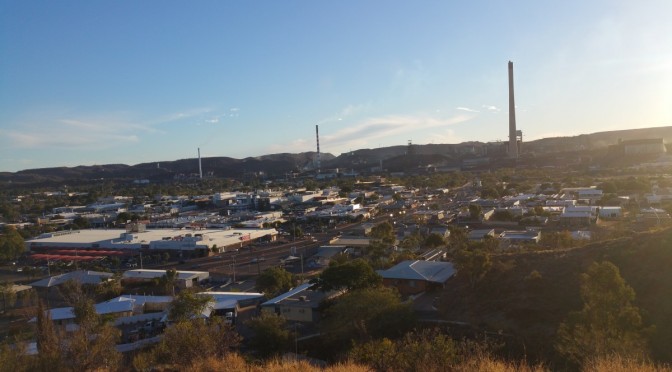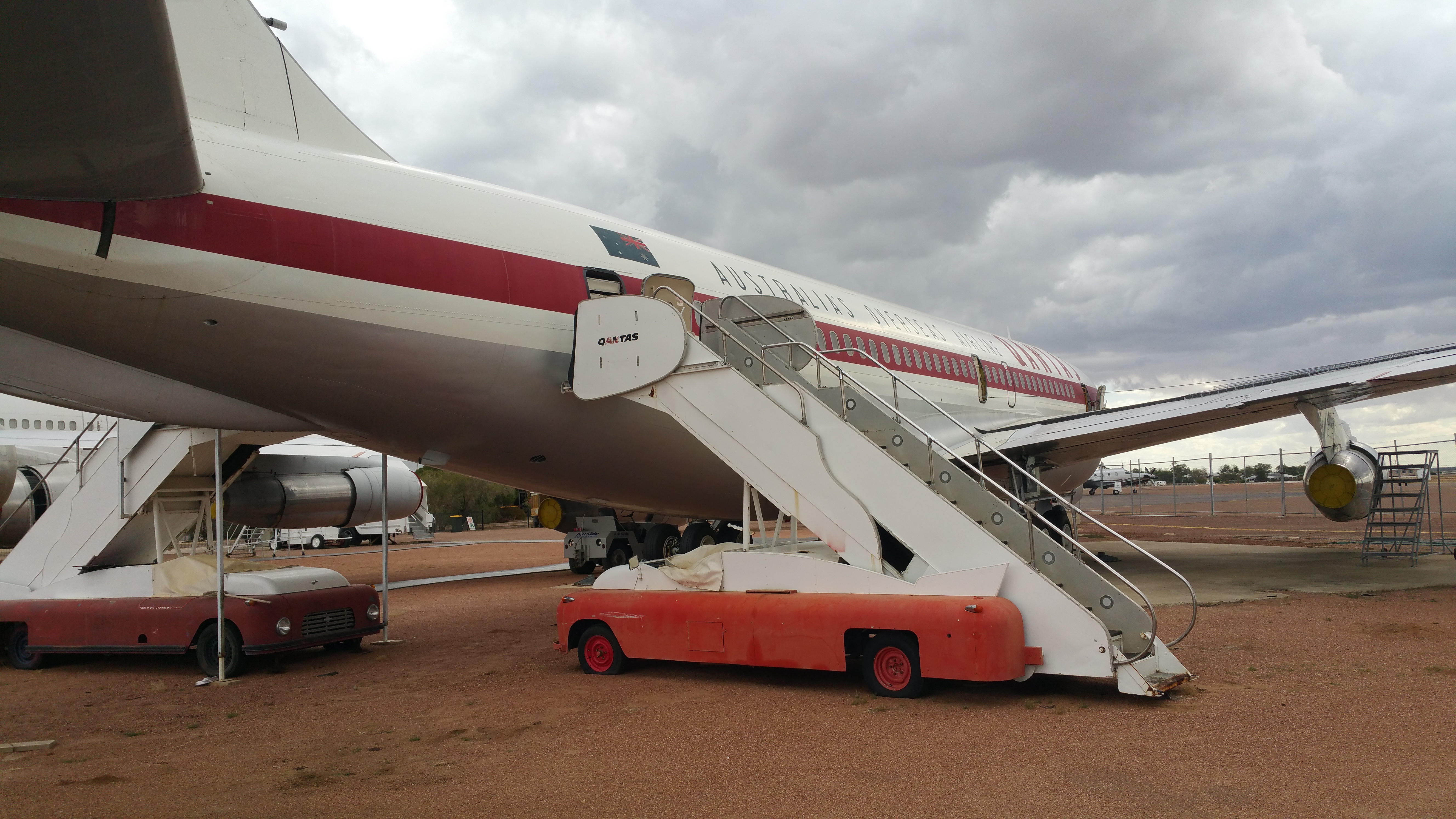There are no cafes, cinemas or wifi hotspots in the bush, so you have to be more creative in the outback. A very common hobby is to dress termite mounds in spare clothes. These look disturbing like a group of people from the distance until you get close enough to realise.
Monthly Archives: July 2015
Mount Isa
Mount Isa is an astonishing place. It is deep in the arid outback. Despite the signs warning that you are close, there are no other indications until you see the mine stacks. As you come over a ridge you see the town, but it is dwarfed by the mine of the far side of the Leichhardt River.

The Leichhardt River itself was mostly dry. Dog and I had many pleasant walks along it. But despite our efforts, we could get no closer to it.

There are many interesting things to do in Mt Isa, but we all had run out of steam by then, so mostly did housework and arrange some repairs. In the end, the ubiquitous dust (and lead {Pb} warnings) drove us on.
Freecamping outside of Winton
After viewing the dinosaurs, we free camped to the north of the town of Winton. It was a very barren area with climbable jump ups. Interestingly, it had rained recently as there were rivulet marks in the dust, and the smaller rocks were aligned along them.



Winton – A place I shall return to
After leaving Longreach, we drove towards Mt Isa, which took us through Winton. I had seen on a tourist brochure that Winton was the dinosaur capital of Australia, and being into prehistoric reptiles myself, I thought I might visit.
Winton is proud to host three unique species of dinosaur – a raptor called Banjo (shown above) and two sauropods called Matilda and Elliot. However, the labratory at Winton (on a jump-up off the highway) has a ten year backlog of excavated bone waiting to be cleaned up. All the digging and cleaning is done by trained volunteers. The digging is done for only three weeks of the year – that is enough to refill the backlog. The guide said that the bones were everywhere.
The cleaning was being done in the lab as we toured. There were eight cleaners sitting with large magnifying glasses and using what looked like dentist drills to remove the rock from the fossils. The guide said they were closer to jackhammers.
I chatted to one of the volunteers who was a bit older than me and was proudly describing a fossil he and an 81 year old colleague and found earlier. (It was the size a large eski.)

A volunteer needs a few hours training and ten days support to be fully trained. Thereafter they can return as often as they wish. This is what I want to do. I shall return!

Interestingly, underneath the dinosaur fossils are a bed of marine fossils – there was an inland sea at Winton. From these beds, there were beautiful fossils of crabs, crayfish, mussels and the ubiquitous nautilius.
Longreach
Longreach is in the midst of a drought – no significant rain in three years I heard someone day. The caravan park has dead trees and little green.
On the approach to Longreach, the first thing you see is a QANTAS 747 tail.
What you do not realise until much closer is that there are two tails; the second is for a 707, but it is dwarfed.
This might have been the plane I first flew to Australia in – that was a 707 from San Francisco.
The QANTAS Founders Museum is quite good, with many models of planes, that give you an idea about how brave those founders were.
There is also a Stockman’s Hall of Fame with a great set of exhibits on pioneer life, including a great section on the Flying Doctor Service.
There is a lot of bird life in Longreach. The amazing ones are the Brolgas which are a bit tame ans visit the caravan camp looking for a feed. At over a metre tall, you are not inclined to disappoint.
This town is also on the Tropic of Capricorn.













